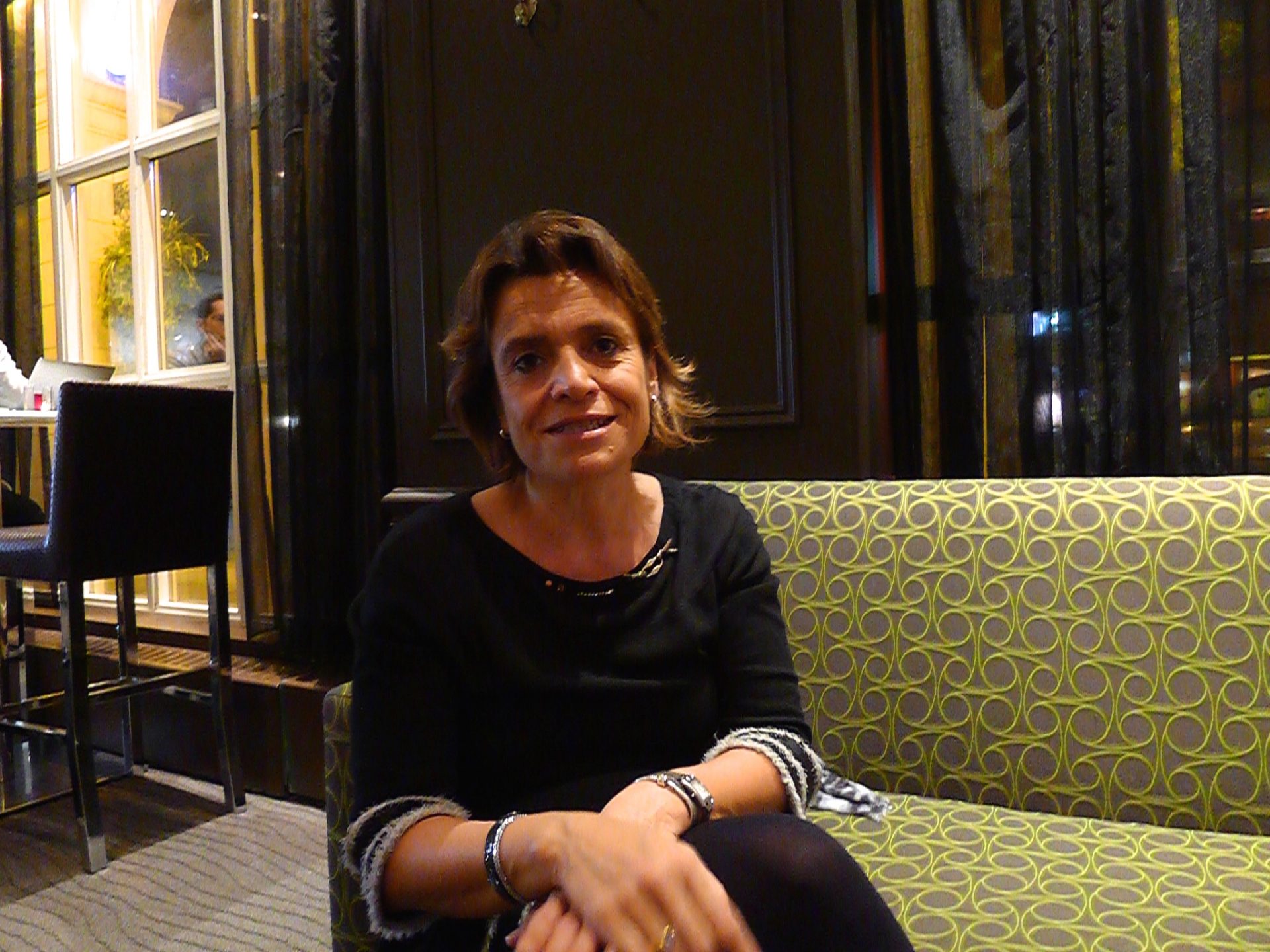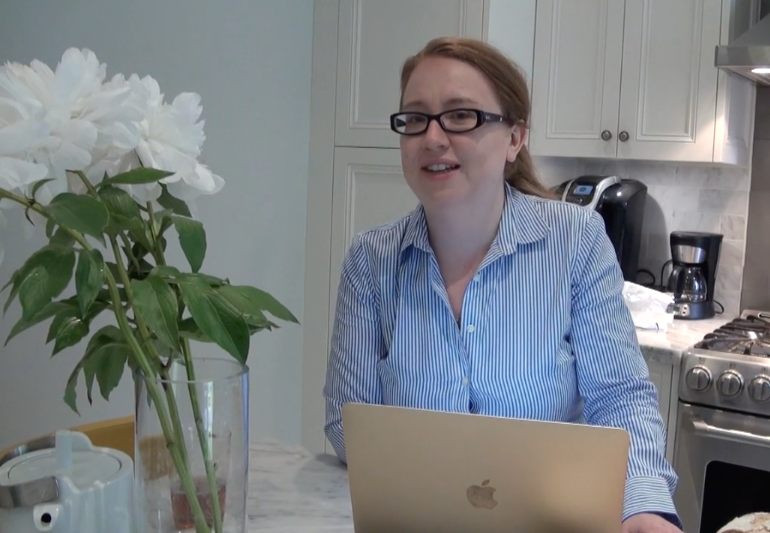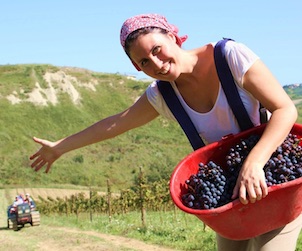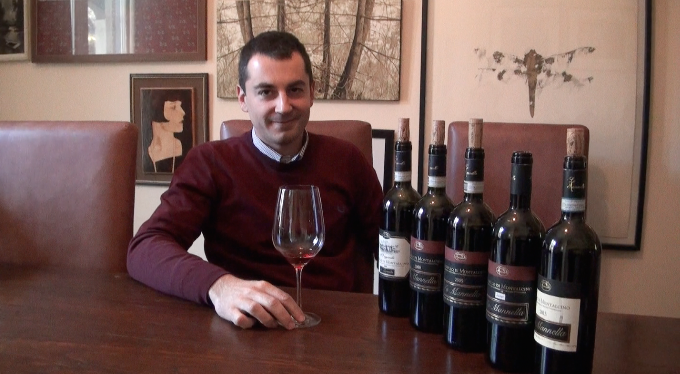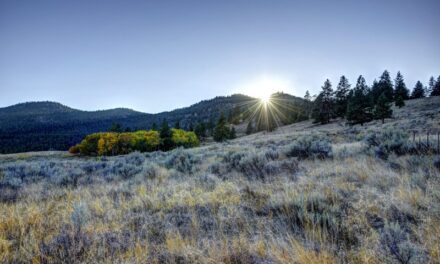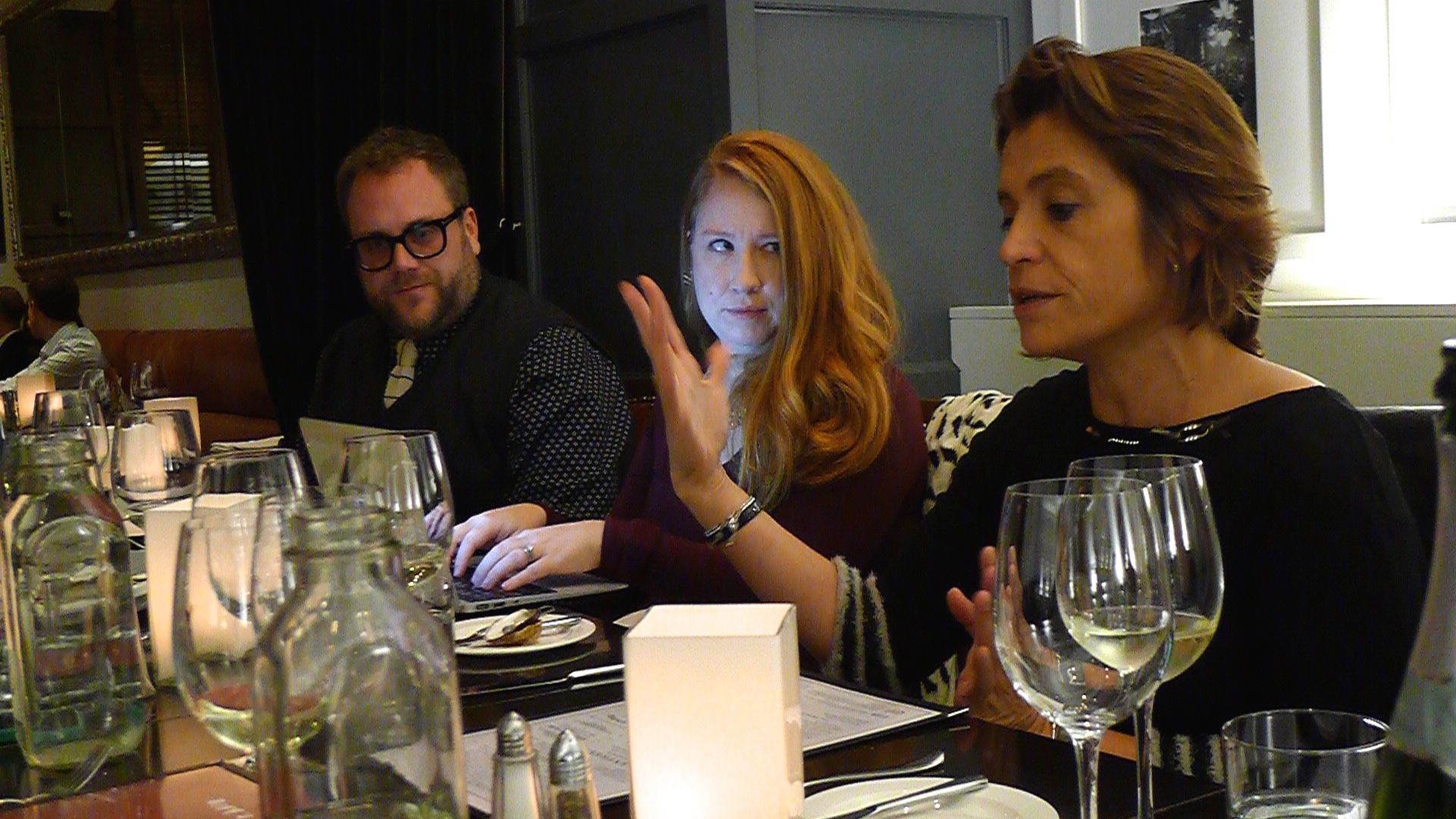
Francois Antech-Gaseau holds court at Biff’s Bistro, Toronto, charming a table of local Sommeliers with her wines and her stories.
Last week I broke bread and clinked glasses with Francoise Antech-Gaseau of the sparkling house of Antech from Limoux, France. She was in town to meet with Sommeliers and introduce her range of delightful sparkling wines to Toronto.
After dinner we sat down and asked her a few questions about this fascinating region and her family’s wines.
If you are unfamiliar with the sparkling wines of Limoux then I recommend that you give them a try. You will be most pleasantly surprised.
Good Food Revolution: Hello Francoise… great to meet you… would you please tell us a little about the history of your family’s winery in Limoux?
Francoise Antech-Gaseau: Antech estate is a family-owned winery specialized in making A.O.C sparkling wines for more than six generations. All our wines are market under Terra-Vitis certifications, related to sustainable viticulture. I joined the company 20 years ago to work with my father and uncle and I’m just having a lot of fun doing this.
GFR: Now, for those of our readers who are unfamiliar with the region and its sparkling wines, would you care to explain the different wines that you produce?
F A-G: Well…
Blanquette de Limoux Méthode Traditionnelle with the main grape being the local Mauzac, 90% minimum
Crémant de Limoux White and Rosé Méthode Traditionnelle, mainly Chardonnay and Chenin, a little bit of Pinot Noir on some Cuvées when we want to give more body and always a little bit of Mauzac to remember that our wines comes from Limoux.
Blanquette Méthode Ancestrale Méthode Ancestrale (a natural restart of the fermentation without any added sugar). Naturally sweet and fruity with only 6% alcohol, made with 100% Mauzac.
GFR: What differentiates the sparkling wines of Limoux from those made elsewhere in France and the rest of the world?
F A-G: We have an ancestral savoir faire, indeed it’s in Limoux in 1544 that the first Bubbles were invented.
We have a méditéranéan climate that brings to the wines many aromas, combined with some oceanic influences (giving the wines body) and a part of the vineyard is located up to 400m above sea level which brings a certain freshness and vivacity. Our wines are round, expressive and delicately refreshing.
GFR: And varietal-wise, what are you using?
F A-G: The main grape for the Blanquette is the Mauzac (typical idiomatic grape from Limoux) and for the Crémant, more classic cépages as Chardonnay, Chenin and Pinot Noir.
GFR: Now it is believed that way before Dom Perignon, you were making sparkling wines down in Limoux?
F A-G: The story is very old. During the Renaissance period the monks from a Benedictine abbey in Limoux discovered the sparkle, probably through the process with which we produce the Ancestrale today. That was 150 years before Dom Pérignon…
GFR: How do you feel the sparkling wines of Limoux are perceived around the world? Where are your largest markets?
F A-G: They always create interest (Bubbles always create the interest anyway !), because they are fresh, delicate and most of all very easy to drink.
We sell 50% of our production abroad mainly in northern Europe, America and Japan.
GFR: And if you want to expand people’s understanding of these wines, what would you see as your target demographic?
F A-G: it’s not a question of age, I would try meet all the people that enjoy life, food ; conviviality and share. Life is too short to be sad, a day is much better with a glass of sparkling ! And remember : a glass of sparkling wines a day, keeps the doctor away !
GFR: Haha… I’ll remember that!
I believe that you have done many experiments with more natural styles of winemaking over the years?
F A-G: yes I’ve done many experiments and my philosophy is to keep the wines as natural as possible but also to use modern techniques when they improve the tasting of the wine.
GFR: How do you feel about the whole Vin Nature scene as a whole?
F A-G: Nature or not I like the good wines that smell delicate !
GFR: So where do you see today’s palate leading… towards the super dry styles, or is that little bit of residual sugar still appreciated?
F A-G: Globally I have noticed a recent trend to go for less and less sugar.
Most of the people are looking for a good balance in mouth and the combination of a good dosage with the natural acidity offers very nice sensations in mouth. Of course this all depends on the acidity of the year, the grape (Mauzac is naturally round so you do not need to add so much sugar) and of course the palate of the consumer.
What I notice is that as the people taste more wines they tend to go for those with a lower dosage to discover the purity of the wine.
That is why I have created a range of Brut Nature (Zéro Doasage) where the wines are the same some have received dosage the other not !
GFR: Would you please give me your favourite food pairings with your different wines?
Blanquette de Limoux Réserve Brut : Apéritive with a foie-gras toast
Blanquette de Limoux Brut Nature : oysters and seafood
Crémant de Limoux Emotion Brut Rosé: scallops , salmon and asian food ; strawberries tart
Crémant de Limoux Expression : apéritive, goat cheese and honey
Crémant de Limoux Grande Cuvée 2010 Brut : scramble eggs with black truffles, chicken in white sauce
Blanquette Méthode Ancestrale : Crêpes Suzette, Tarte tatin
GFR: Thank you so much for your time, Francoise!
Antech are represented in Ontario by Noble Estates. Noble Estates are a Good Food Fighter. Please support the businesses and organizations that support Good Food Revolution.

Edinburgh-born/Toronto-based Sommelier, consultant, writer, judge, and educator Jamie Drummond is the Director of Programs/Editor of Good Food Revolution… And he’s really amazed at these superb wines.

